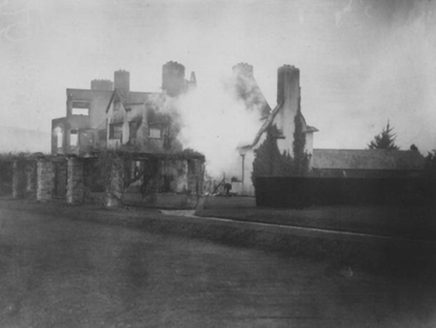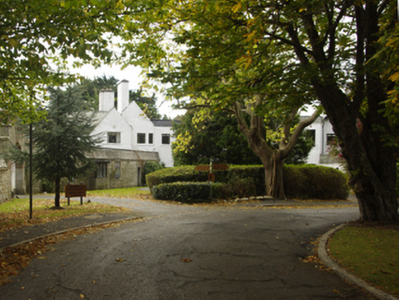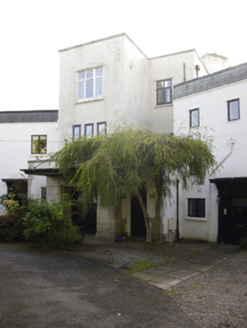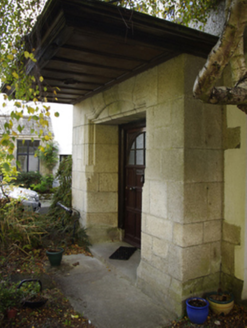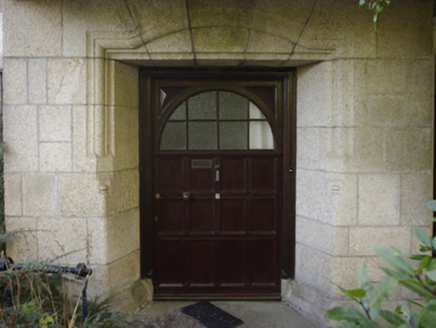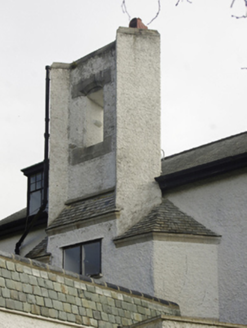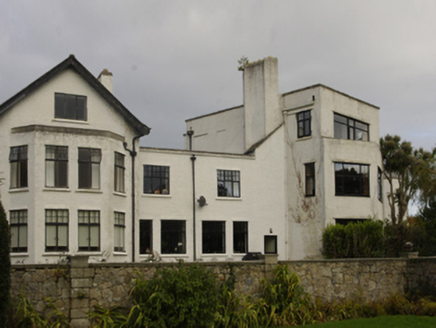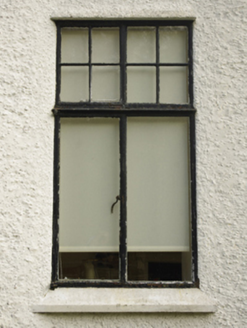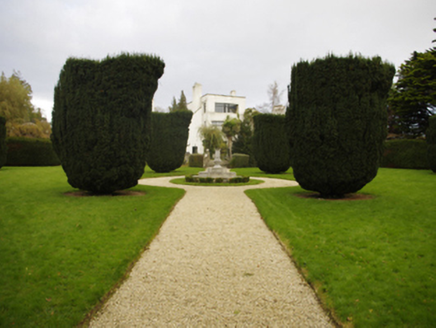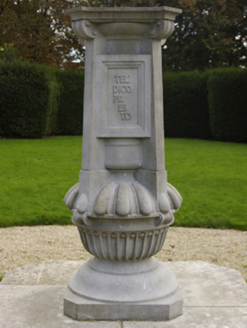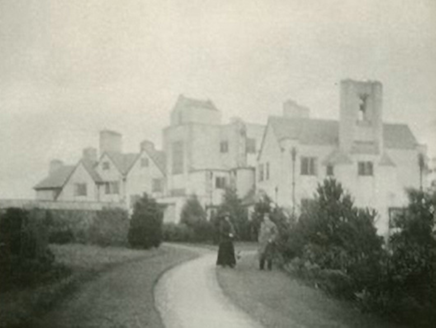Survey Data
Reg No
60230049
Rating
Regional
Categories of Special Interest
Architectural, Artistic, Historical, Social
Original Use
Country house
Date
1900 - 1910
Coordinates
321776, 225686
Date Recorded
24/10/2014
Date Updated
--/--/--
Description
Detached seven-bay two- and three-storey country house, built 1904-5; dated 1905, on a splayed L-shaped plan centred on single-bay three-storey breakfront tower on a rectangular plan with single-bay two-storey gabled end bays. Occupied, 1911. Burnt, 1923. Reconstructed, 1925, producing present composition. Set in landscaped grounds.
Appraisal
A country house erected for Sir Horace Curzon Plunkett KCVO PC (1854-1932) to a design by the Swedish-born William Douglas Caröe (1857-1938) representing an important component of the early twentieth-century domestic built heritage of south County Dublin with the architectural value of the composition, one allegedly inspired by Cecil John Rhodes' house (1893-6) at Groote Schuur near Capetown, South Africa (Bence-Jones 1978, 177), confirmed by such attributes as the so-called "butterfly" plan form designed not only to catch the sun, but also to provide scenic vistas overlooking a "parterred" walled garden with the peaks of the Dublin Mountains as a picturesque backdrop; the austerely-detailed frontage centred on a canopied doorcase; the whitewashed surface finish offset by silver-grey Ballyknockan granite dressings '[presenting] a gleaming and sparkling effect in the sunshine' (The Irish Builder and Engineer 8th January 1910, 11); the uniform or near-uniform proportions of the openings on each floor; and the high pitched gables framing a stepped flat roofline. Although reduced to a shell during "The Troubles" (1919-23), in the process losing 'Plunkett's own bedroom on the roof with a mechanical device enabling him to turn his bed towards the sun and against the wind' (Bence-Jones 1978, 177), a reconstruction by the Kilteragh Development Company (formed 1923) retained the elementary form and massing together with quantities of the original fabric, thus upholding much of the character or integrity of the composition. Furthermore, adapted outbuildings (see 60230050; 60230051) continue to contribute positively to the group and setting values of a suburban estate making a pleasing visual statement in a sylvan street scene. NOTE: Kilteragh Development Company Directors: Sir Horace Curzon Plunkett KCVO PC (1854-1932); Sir Lionel Eldred Pottinger Smith-Gordon (1857-1933); James Walter Beckett (1875-1938); Kilteragh Development Company Architects: Beckett and Harrington (formed 1918) of Saint Stephen's Green, Dublin; Edwin Bradbury (1875-1948) of South Frederick Street, Dublin; and Richard Francis Caulfield Orpen (1863-1938) of South Frederick Street, Dublin.
